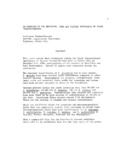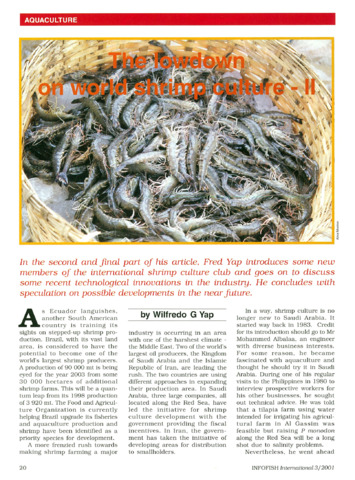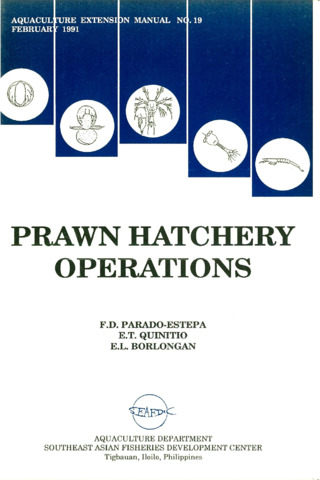| dc.contributor.author | Lebata-Ramos, Ma. Junemie Hazel | |
| dc.contributor.author | Solis, Ellen Flor D. | |
| dc.contributor.author | Sibonga, Rema | |
| dc.contributor.author | Watanabe, Satoshi | |
| dc.contributor.editor | Tanaka, Katsuhisa | |
| dc.contributor.editor | Morioka, Shinsuke | |
| dc.contributor.editor | Watanabe, Satoshi | |
| dc.date.accessioned | 2015-04-10T10:32:34Z | |
| dc.date.available | 2015-04-10T10:32:34Z | |
| dc.date.issued | 2012 | |
| dc.identifier.citation | Lebata-Ramos, M. J. H., Solis, E. F. D., Sibonga, R. C., & Satoshi, W. (2012). Co-culture trials of sandfish Holothuria scabra and black tiger shrimp Penaeus monodon in mangroves. In K. Tanaka, S. Morioka, & S. Watanabe (Eds.), Sustainable stock management and development of aquaculture technology suitable for Southeast Asia (JIRCAS Working Report No. 75) (pp. 87-95). Tsukuba, Ibaraki, Japan: Japan International Research Center for Agricultural Sciences. | en |
| dc.identifier.issn | 1341-710X | |
| dc.identifier.uri | http://hdl.handle.net/10862/2175 | |
| dc.description.abstract | To address its mandate to develop environment-friendly culture techniques, the Southeast Asian Fisheries Development Center, Aquaculture Department (SEAFDEC/AQD) is trying to establish a culture system in mangroves for commercially important aquaculture species. Recently, SEAFDEC/AQD has successfully produced sandfish, Holothuria scabra, in the hatchery. Using hatchery-bred juveniles, monoculture and co-culture trials are being conducted in ponds, pens and cages. This study investigated the feasibility of the co-culture of black tiger shrimp, Penaeus monodon, and H. scabra in the mangroves by comparing growth and survival in monoculture and co-culture conditions. Water and sediment quality were compared between treatments. Results showed that growth and survival of P. monodon (P. monodon only = 48.8±4.9%; P. monodon + H. scabra = 46.1±7.4%) and H. scabra (H. scabra only = 13.1±6.1%; P. monodon + H. scabra = 12.3±6.2%) grown together or separately did not significantly differ. P. monodon survivial was positively correlated while growth negatiely correlated with temperature. Feed input significantly increased sulfide levels in both treatments (P. monodon; P. monodon + H. scabra) and sulfide significantly differed between treatments with the highest concentration in P. monodon only, then P. monodon + H. scabra and H. scabra only. Ammonia concentrations followed the same trend as sulfide but did not significantly differ among treatments. P. monodon cultured in mangroves were not affected by the white spot syndrome virus which affected neighboring culture ponds. Results of these initial trials may not be conclusive yet but show a promising culture system for P. monodon that may be integrated with the mangroves. | en |
| dc.description.sponsorship | This study was funded by SEAFDEC Aquaculture Department and the Japan International Research Center for Agricultural Sciences under Study Code FS-11-Y2010D. | en |
| dc.language.iso | en | en |
| dc.publisher | Japan International Research Center for Agricultural Sciences | en |
| dc.relation.ispartofseries | JIRCAS Working Report; No. 75 | |
| dc.subject | White spot syndrome virus | en |
| dc.subject | SEAFDEC/AQD | en |
| dc.subject | Holothuria scabra | en |
| dc.subject | Penaeus monodon | en |
| dc.title | Co-culture trials of sandfish Holothuria scabra and black tiger shrimp Penaeus monodon in mangroves | en |
| dc.type | Book chapter | en |
| dc.citation.spage | 87 | |
| dc.citation.epage | 95 | |
| dc.subject.asfa | sulphides | en |
| dc.citation.bookTitle | Sustainable stock management and development of aquaculture technology suitable for Southeast Asia | en |
| dc.subject.scientificName | Penaeus monodon | |



